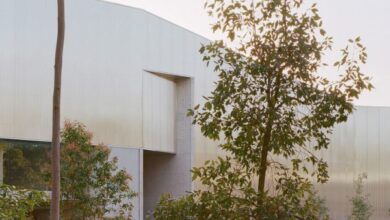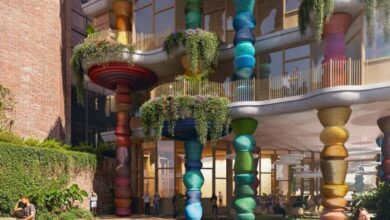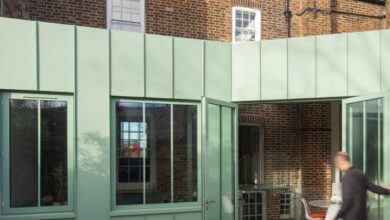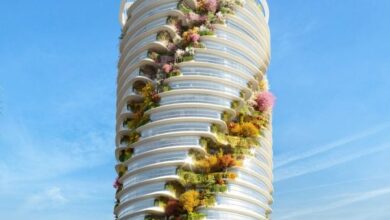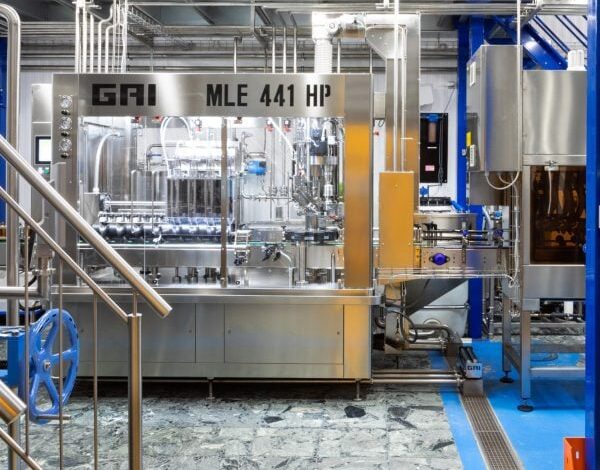
Spacon & X adds kombucha brewery to 1930s building in Copenhagen
[ad_1]
Danish studio Spacon & X preserved “different layers of unique history” when designing the Folk Kombucha brewery, which is set within a listed building in Copenhagen‘s Meatpacking District.
The factory belongs to fermented-tea brand Folk Kombucha and features a production area for kombucha brewing overlooked by a mezzanine level used for workshops and other social events.
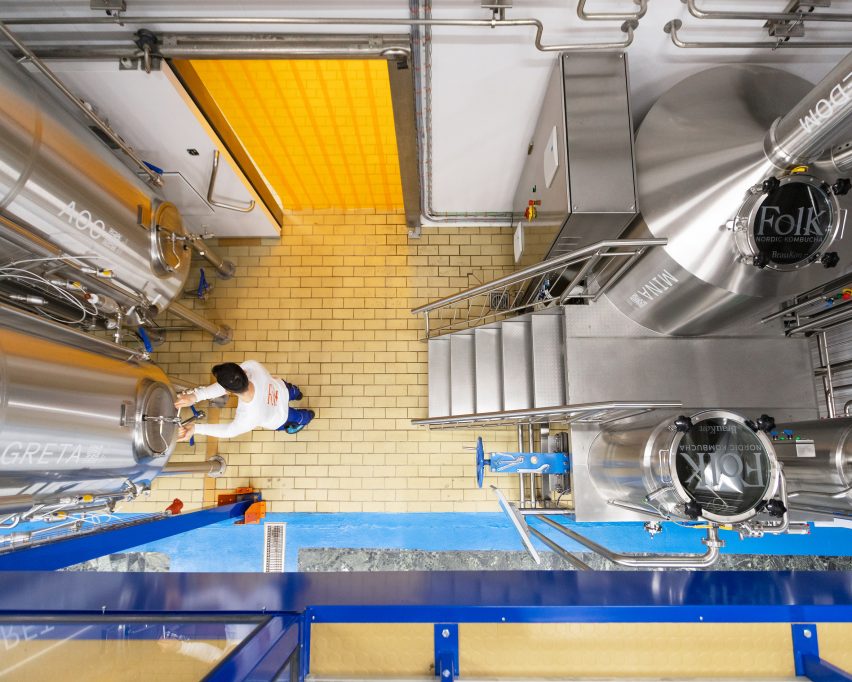
Local firm Spacon & X aimed to balance the history of the 1930s functionalist building with its contemporary needs when designing the interior, which is led by cobalt blue, orange and pink accents.
“The buildings in the Meatpacking District are from the 1930s and have a strong character,” said architect Malene Hvidt.
“Our design team aimed to preserve different layers of unique history,” she told Dezeen.
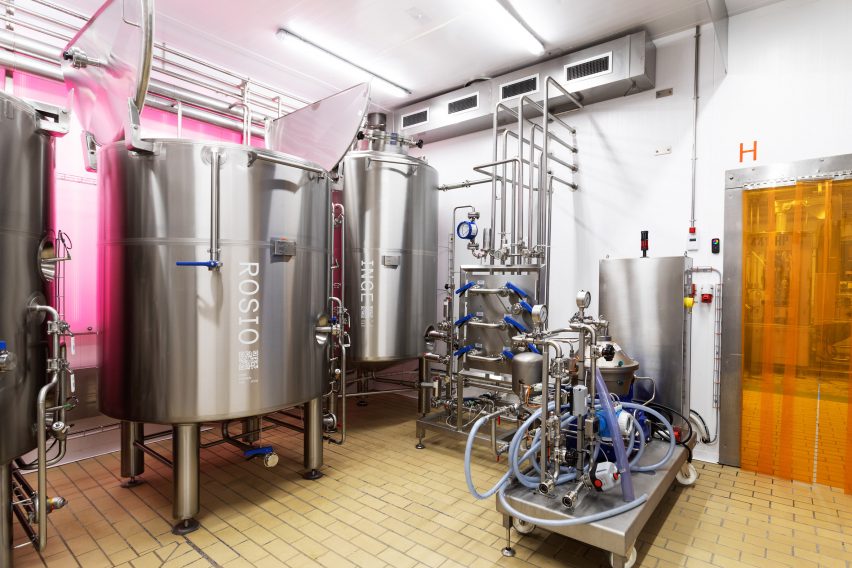
Spacon & X maintained the building’s “archetypal Meatpacking white-tile walls” as well as mustard-yellow and green marble floor tiles.
Translucent iridescent panels were placed behind the various stainless steel fermentation tanks to delineate spaces within the brewery.
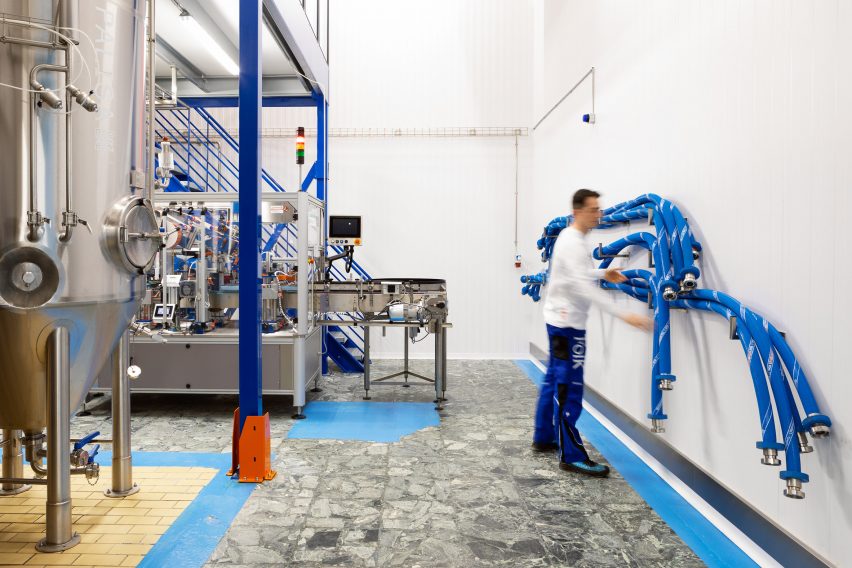
Stainless steel was also used to form the extensive network of pipes connected to the tanks as well as custom tables and benches topped with bright blue rubber.
This tangle of tubes was echoed with the addition of spaghetti-shaped wire lighting.
“The buildings in the area are all known for their white facades with windows and panels painted in a strong cobalt blue colour,” explained Hvidt. “Cobalt blue was chosen to pay tribute to the area itself.”
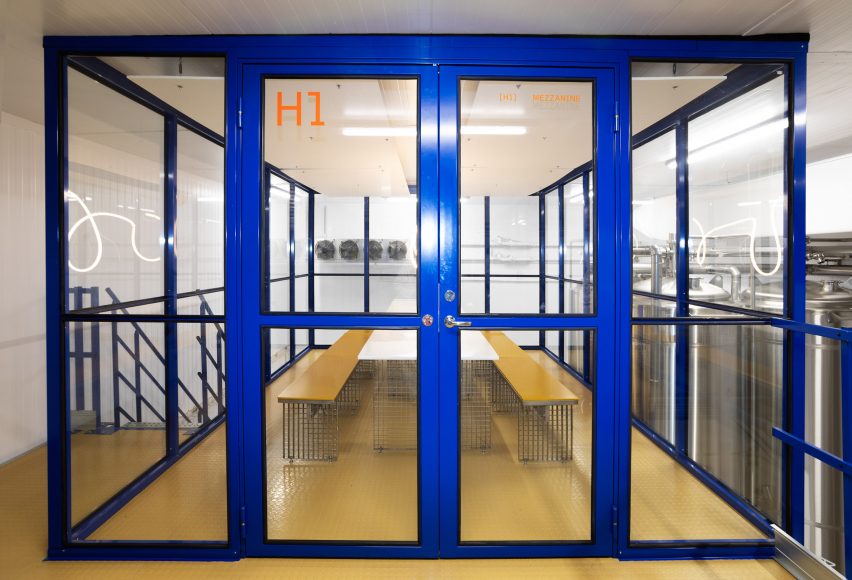
Spacon & X created lounge tables by recycling plastic packaging salvaged from fish and other food waste, which was industrially produced at the site before it became the Folk Kombucha brewery.
“Instead of throwing out this long-lasting hygienic material, we transformed it into unique custom-made tables,” Hvidt said.
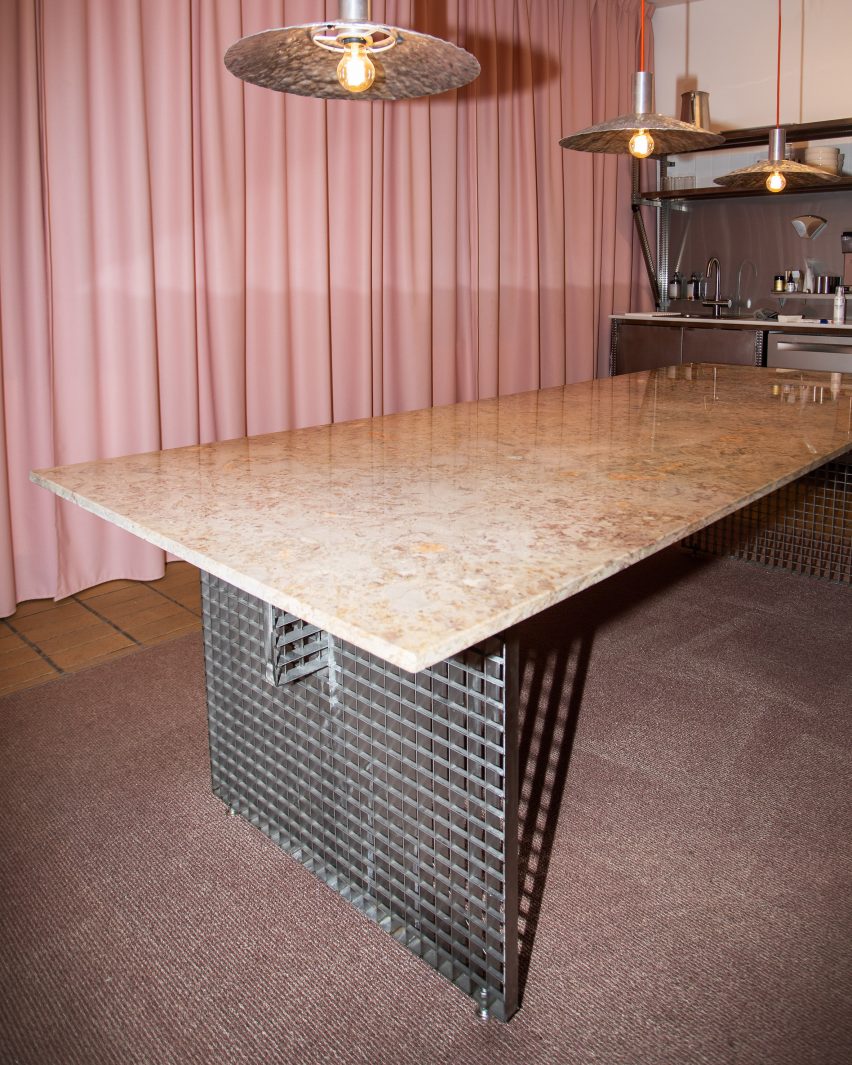
Artwork made of scoby — a culture of yeast and bacteria that kickstarts the kombucha fermentation process — was used to decorate the interior alongside bespoke hand-hammered steel lamps.
Other spaces within the multipurpose building include offices, a separate lounge, a laboratory and various storage areas.
“The brewery’s spatial design was created in a way that resembled and preserved the listed building’s long history and strong character,” said Hvidt.
“The design also incorporates subtle, organic and innovative spatial solutions with functionality and uses the building’s industrial nature as a guiding principle.”
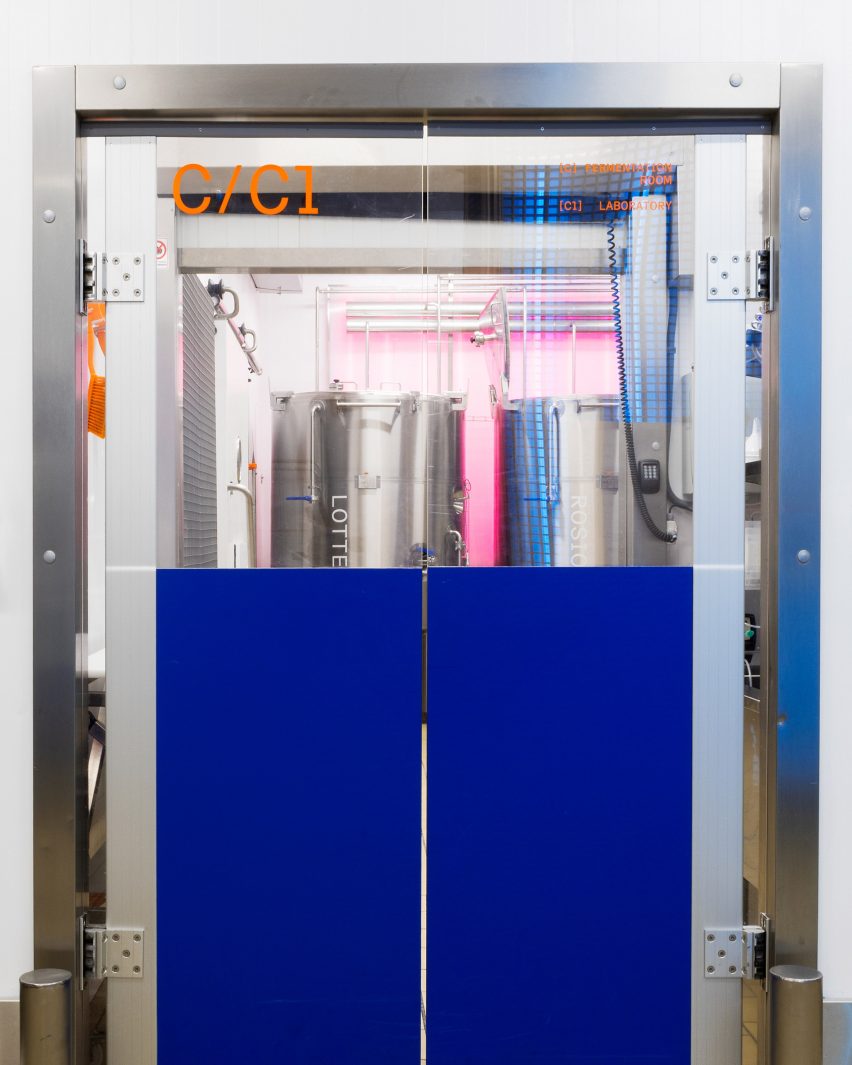
Elsewhere in Copenhagen, Spacon & X previously created the interior for a burger restaurant filled with natural materials and plants.
The studio has also completed an Ace & Tate glasses store in the city, taking cues from colourful artists’ studios.
The photography is by Hedda Rysstad.
[ad_2]


